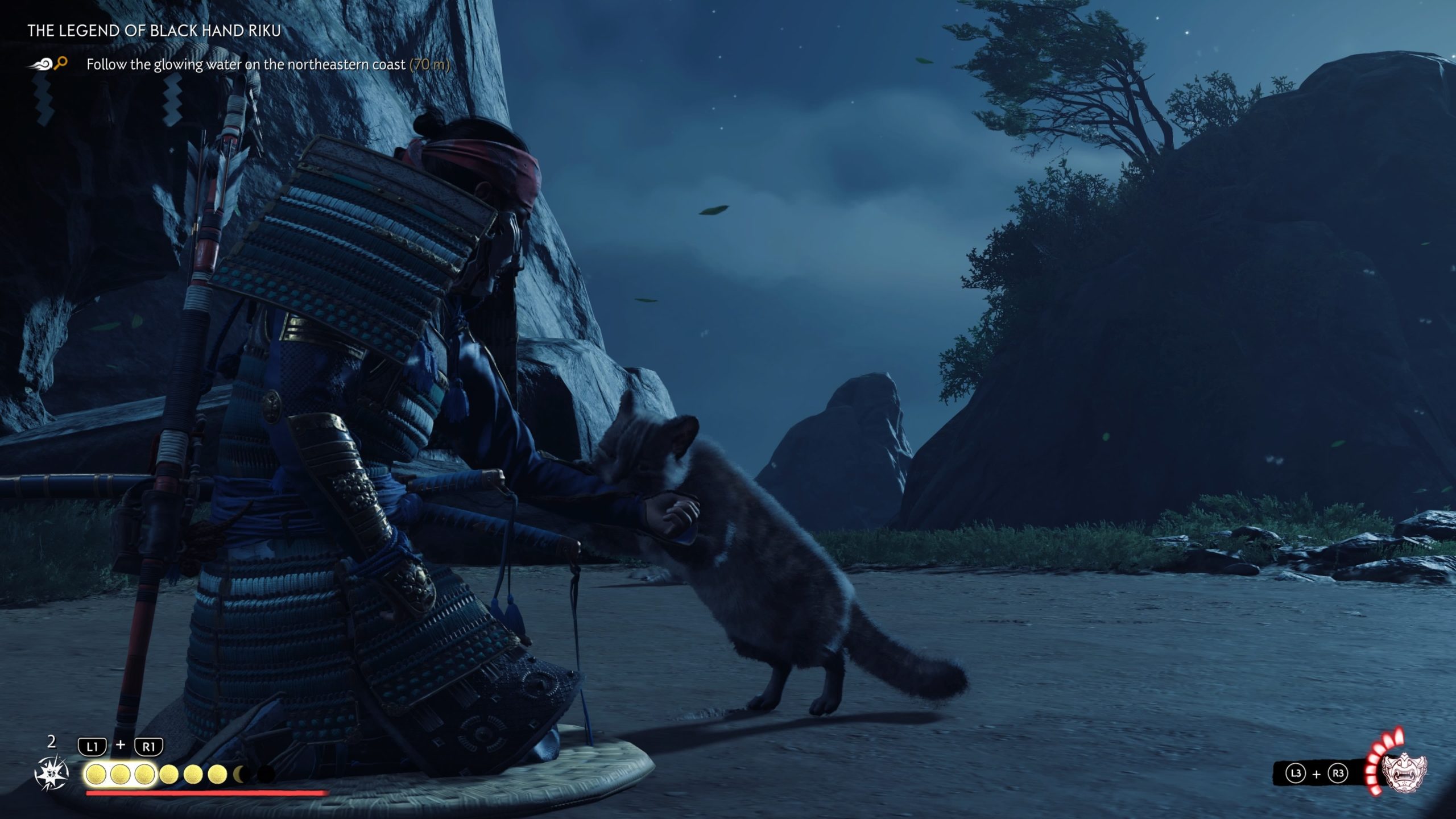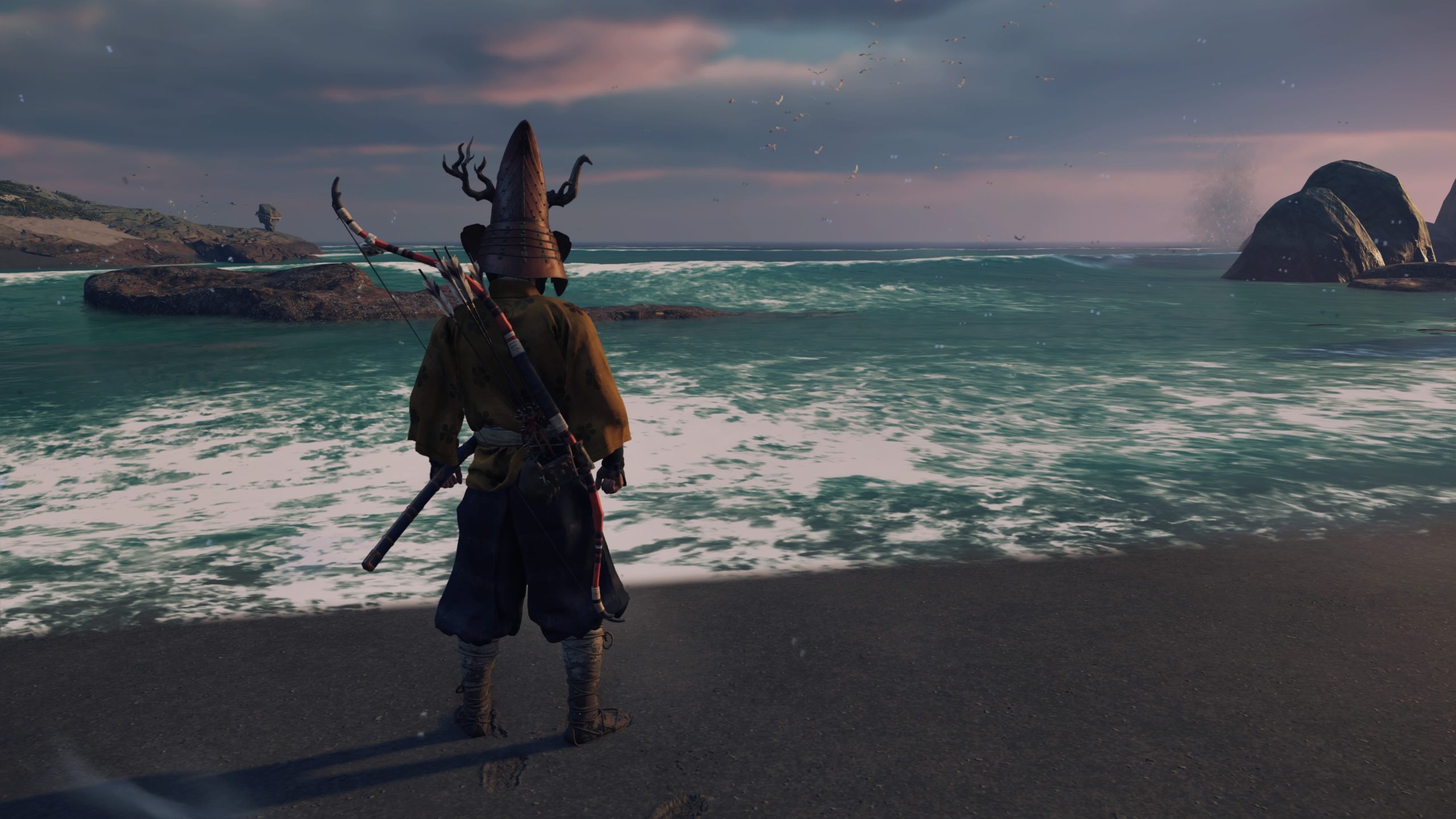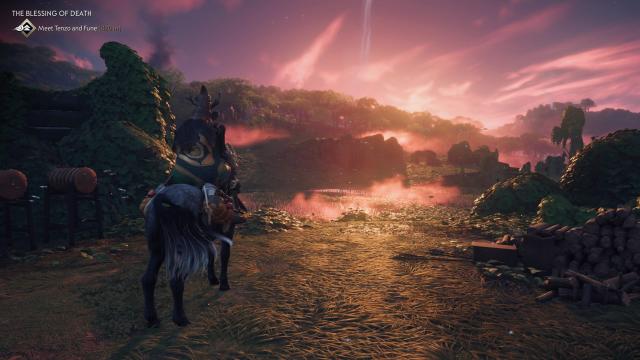Of all the features announced for the PlayStation 5 version of Ghost of Tsushima’s new director’s cut — bullet points like “DualSense wireless controller haptic feedback” and “dynamic 4K resolution targeting 60 fps” — the one that most caught my attention was “lip sync for Japanese voiceover.”
See, when marketing the game’s original release last year, developer Sucker Punch revealed “Kurosawa mode,” an apparent effort to demonstrate that, despite being a western studio, it was taking the responsibility that comes with telling a story set in Japan’s past seriously. Named for the brilliant Japanese filmmaker Akira Kurosawa, who made a number of legendary samurai epics, this mode combined a Japanese dub with a black-and-white filter and audio tweaks meant to mimic the sound of 1950s TVs. However, the conspicuous lack of Japanese lip sync meant that, particularly in close-ups, any potential sense of authenticity was lost.
That’s thankfully no longer an issue in this director’s cut, but the larger reason why invoking Kurosawa’s name was a significant overreach remains. Ghost of Tsushima is a decent enough open-world game, but it lacks the spark of true inspiration or daring that would set it apart from its peers. As a result, it also lacks the distinctive character and greatness of Kurosawa’s best films.
The director’s cut brings with it a new area, the island of Iki, and a new questline that ties in to protagonist Jin Sakai’s past and his ongoing struggle to define himself after the Mongol invasion destroyed his old life. And, just like the core game, this expansion is…fine. If you were left wanting more Ghost of Tsushima, Iki island is exactly that, no more and no less. The new content here doesn’t stand out meaningfully from anything in the main game, so it’s also not a compelling reason to come back to Tsushima if you haven’t been pining to return.

If you’re starting Ghost of Tsushima from the beginning, the Iki island questline becomes available after you complete act one. If you happen to be using a PS4 save file from later in the game, you’ll immediately be notified of where to go to begin the new adventure. (If you’re playing on PS5, your PS4 save file will also instantly unlock a bunch of PS5 trophies. Cha-ching!)
The new adventure begins when Jin learns that a Mongol chieftain known as the Eagle is somehow driving residents of nearby Iki island into madness, and fears what could happen if she were to invade Tsushima. So he sets out for Iki to confront the new threat, and encounters the Eagle almost immediately. Through means I won’t detail, the Eagle establishes a kind of psychic connection with Jin, becoming an unwanted presence in his mind, haunting his thoughts and conjuring unbidden visions.
The concept of someone riding shotgun in the player-character’s mind has real potential. Some games have done it with such energy that you can feel your character’s psyche fraying amid the hallucinatory immediacy of their visions. This might have given Jin’s quest on Iki a significantly different flavour from that of the main game. But here it’s just another plot point, failing to shake you up or even destabilize Jin all that much.
There are revelations aplenty awaiting Jin on Iki. Painful truths about his father become impossible to ignore, forcing him to confront his family’s legacy in new ways. But for a narrative that plumbs such depths of grief and shame, it all feels rather flat, in part because Jin gives us so little access to his internal struggles. On Iki, he lacks great companions like Yuna who occasionally got him to lower his defences a bit and express a wider range of emotions.
Iki’s action is similarly workmanlike, with no particularly memorable new missions or significant wrinkles to combat. You do encounter a new enemy type, shamans, who are a real nuisance, performing chants that make your enemies fiercer and more resilient. It behooves you to prioritise them, hunting them down in the chaos of the game’s many large-scale skirmishes. Once you’ve figured that out, you’re ready for what Iki island throws at you.
Unsurprisingly, Iki also shines in the same ways that Tsushima did, beckoning with natural wonder and the pleasures inherent in exploring it. Diffuse moonlight filling the sky on a cloudy night, or the turquoise waters of a shoreline strewn with corpses — wherever you go, there are striking sights to behold, some simply beautiful and others more complicated in the emotions they evoke. My favourite time with Iki, as with Tsushima, was when I first arrived, and every journey took me into new territory. I had to actually travel to wherever I was going, contending with Iki’s terrain as if it were a real place, not yet reduced to a collection of convenient waypoints. (On PS5, fast travel is nigh-instantaneous when you do use it, though, which is impressive.)
Activities like plumbing the depths of a dark cave in search of a legendary armour set are enjoyable because they play to the game’s strengths: a vivid atmosphere and convincing natural environments. The option in certain spots, carried over from the main game, to pause and compose a haiku remains a refreshing inclusion because it affords you the opportunity to be in the environment in ways that aren’t focused on combat or resource collection, but simply on contemplating the beauty of a tree or the laziness of a cat. Ghost of Tsushima constantly calls to you with its overstuffed gaminess, the sky full of golden birds always eager to lead you to some new point of interest or collectible, but it’s at its best when it stops trying to distract and lets you just be in this gorgeous setting that deserves a better game.

When I finished Ghost of Tsushima’s main quest last year, much of the island still remained unexplored on my map. The same is true of the Iki island expansion. Completing its main quest and a decent assortment of other activities — including visiting sanctuaries for monkeys, cats, and deer, all of which, yes, you can pet — took me around six hours. But there are still swaths of Iki I haven’t seen, no doubt full of more side-quests and settlements to liberate.
In other words, again, Iki island is just more Ghost of Tsushima. I wish it had done more to differentiate its action, or tell a bolder story. There are definitely good reasons to visit Iki. I won’t soon forget that moonlight filling the cloudy sky. But it’s too conventional an expansion to be the bid for greatness that this game’s vivid world deserves.

Leave a Reply